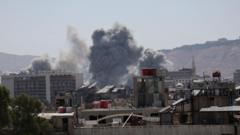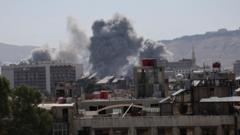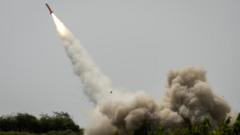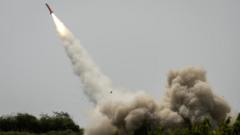Nay Pyi Taw, the capital of Myanmar, will undergo extensive redesign following a powerful earthquake last month that resulted in widespread devastation.
Nay Pyi Taw's Future: Redesign and Resilience After Earthquake
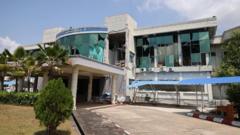
Nay Pyi Taw's Future: Redesign and Resilience After Earthquake
Myanmar's capital is set for a significant redesign as authorities respond to catastrophic earthquake damage.
In the aftermath of the 7.7 magnitude earthquake that struck Myanmar on March 28, Senior General Min Aung Hlaing announced that the layout of Nay Pyi Taw will be redrawn to improve the resilience of buildings against future seismic activity. Evidence suggests that approximately 70% of government structures were impacted by the quake, prompting the military ruler to emphasize the need for new constructions to be founded on robust soil measures.
Reports reveal that the earthquake took a devastating toll, with state media stating over 3,500 lives lost and 5,012 individuals injured. The new urban planning will focus on ensuring that office buildings are resistant to seismic activity, a necessary adjustment for a city built on soft soil.
Nay Pyi Taw, which extends over an area four times that of London, has a history dating back to 2005, when it was designated as the capital of Myanmar by military authorities. Despite its modern infrastructures, including wide thoroughfares and shopping facilities, the city has remained sparsely populated compared to its size.
Civil strife has plagued Myanmar since a military coup in 2021, exacerbating the challenges of rebuilding efforts. A temporary ceasefire initiated on April 2 aimed to facilitate relief operations, but ongoing military assaults on rebel territories have complicated humanitarian efforts.
The National Museum in Nay Pyi Taw has undertaken steps to protect invaluable cultural artifacts, including moving inscribed manuscripts and literature to safer locations. Meanwhile, important ministries are relocating to the former capital, Yangon, while repair initiatives for damaged government buildings are anticipated to be prolonged.
As Nay Pyi Taw undergoes this transformation, the focus will be on creating a city that is not only functional but also secure in the face of natural disasters, emphasizing resilient urban planning strategies in an increasingly unpredictable climate.
Reports reveal that the earthquake took a devastating toll, with state media stating over 3,500 lives lost and 5,012 individuals injured. The new urban planning will focus on ensuring that office buildings are resistant to seismic activity, a necessary adjustment for a city built on soft soil.
Nay Pyi Taw, which extends over an area four times that of London, has a history dating back to 2005, when it was designated as the capital of Myanmar by military authorities. Despite its modern infrastructures, including wide thoroughfares and shopping facilities, the city has remained sparsely populated compared to its size.
Civil strife has plagued Myanmar since a military coup in 2021, exacerbating the challenges of rebuilding efforts. A temporary ceasefire initiated on April 2 aimed to facilitate relief operations, but ongoing military assaults on rebel territories have complicated humanitarian efforts.
The National Museum in Nay Pyi Taw has undertaken steps to protect invaluable cultural artifacts, including moving inscribed manuscripts and literature to safer locations. Meanwhile, important ministries are relocating to the former capital, Yangon, while repair initiatives for damaged government buildings are anticipated to be prolonged.
As Nay Pyi Taw undergoes this transformation, the focus will be on creating a city that is not only functional but also secure in the face of natural disasters, emphasizing resilient urban planning strategies in an increasingly unpredictable climate.





